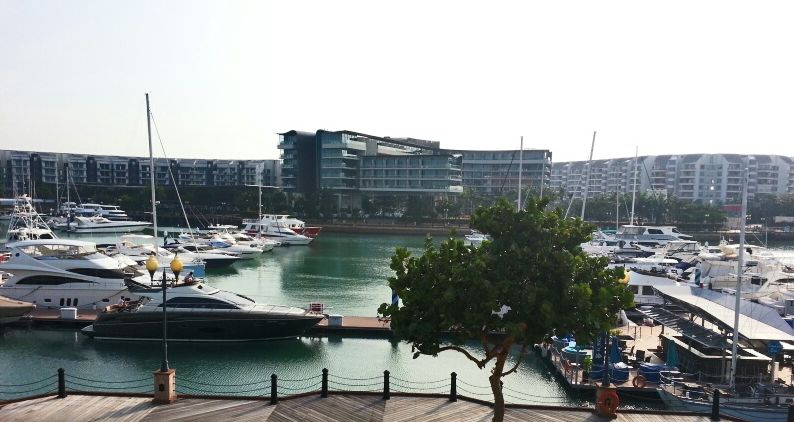First-world city means zilch with third-world connectivity

I spent most of last week camped at Sentosa, an island resort located in the southern tip of Singapore. I was attending a series of meetings held at a spanking new hotel that had opened just four months ago, so I was expecting top-notch facilities and uninterrupted broadband connection.
Wrong.

Some 60 of my colleagues and I were huddled in a conference room most of the day, and relied on the hotel's Wi-Fi network to access the Web. Several of us experienced shoddy connection and frequent dropped lines. So I turned off my Wi-Fi and switched to 3G...dang, no network coverage.
This was Singapore, I thought, a country whose government had long pushed for nationwide broadband coverage and ubiquitous Web connection. A country that boasts a 107 percent wired-broadband household penetration rate, 164 percent wireless broadband penetration rate, and 150.5 percent mobile penetration rate. Over 4 million users here are post-paid 3G subscribers, while another 2.3 million are pre-paid 3G subscribers. One in 5 households in Singapore have fiber connection.
And yet, I was trapped on an island with shoddy Wi-Fi and no 3G connection. The conference room was located on the ground level of the hotel, so network signals--if any--shouldn't be affected. Sentosa is also a popular destination for tourists and locals who visit the island's numerous attractions, including the Universal Studios theme park, casino, beaches, and spas. So it wouldn't make sense for the telcos to not ensure they had seamless network coverage there.
News later surfaced that local mobile operator M1 had suffered a fault in its 3G network, which left its voice and data services completely inaccessible for several of its customers. I figured this might be why I--an M1 customer--had no 3G coverage at all on Sentosa.
As it turned out, M1's service outage lasted 64 hours and resulted in calls for compensation--to which the mobile operator eventually answered. It offered three days of free local mobile calls, SMS, MMS, and data services, and offered its prepaid customers additional bonuses. Considering that most of the prepaid mobile service contracts already come bundled with free incoming calls, between 300 and 500 free SMSes, and 2GB data usage, M1's sweeteners don't really account for much.
More importantly, questions remain over how the operator's infrastructure was unable to withstand the outage, which it said was caused by an unnamed vendor attempting to connect power cables to its distribution rack. In response to growing questions about the apparent lack of redundancy, M1 released a statement on Monday insisting its contingency plans worked. In fact, it argued that not only did its backup plan work, it also reduced the amount needed to fully restore its network services. Without its contingency plans, it would have taken 12 to 16 weeks to fully restore the service, it said.
Whatever the reason, a service outage lasting 64 hours in my view is unacceptable, especially in this era where there's a multitude of options such as cloud and datacenter services offering robust off-site redundancy.
For its latest network gaffe, M1 faces a possible fine of up to S$1 million, according to Singapore's ICT regulator Infocomm Development Authority (IDA), in reference to the Service Resiliency Code, which states financial penalties can be imposed for any breach, and such fines may increase with the duration or extent of service difficulty. Investigations into the power fault are still ongoing.
M1 already had been fined S$300,000 for another network disruption in May of 2011.
Last month, all three mobile operators in Singapore--M1, SingTel, and StarHub--were fined S$10,000 each for failing to meet stipulated quality of service standards for 3G public services.
It's clear these service providers need to review the state of their infrastructure and start plugging the holes. Service outages, spotty network coverage, and poor customer management must be resolved quickly if Singapore is to be regarded as a connected society. Other key service providers, such as hotels, hospitals, and banks also need to establish a baseline quality of service that supports the basic needs of a connected population.
After all, a first-world city means naught if it has third-world connectivity.